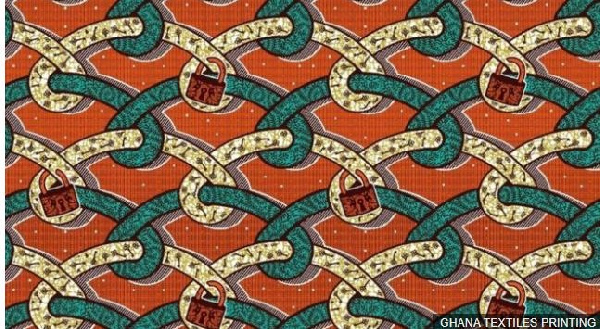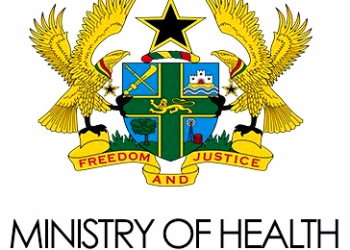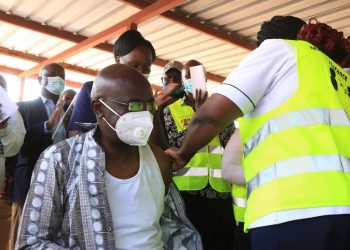A Ghanaian wax-print company has launched a new line of designs inspired by the Covid-19 pandemic.
“[We] put a positive twist on a negative phenomenon” Stephen Badu, from Ghana Textiles Printing (GTP), told BBC Focus on Africa radio.
The new fabrics have symbols like padlocks, keys and planes to reflect some of the measures implemented to curb the spread of coronavirus.
Wax prints are popular in Ghana, many office workers wear them on Fridays.
Two of Ghana’s main metropolitan areas were in lockdown in April – and nationwide there was a ban on public gatherings and the closure of borders.
Restrictions have since been eased – though strict social-distancing measures are in place, especially in churches – and it is a criminal offence not to wear a face mask in public.
“We are a business that tells stories and we tells our stories through our designs,” Mr Badu, GTP’s marketing director, said.
“We believe that it is going to leave a mark in the history of the world, and it’s important that generations that come after us get to know that once upon a time, such a phenomenon occurred.”
Some of the new GTP designs have glasses on them – similar to the signature ones worn by Ghana’s President Nana Akufo-Addo, who has been giving regular updates on the virus.
“He has iconic spectacles that he wears and when you watch him on television that is what stands out,” Mr Badu said.
“Another design shows a symbol of a plane, it indicates that during the lockdown one of the measures that Ghana took was to close the borders, so no flights,” he added.
In 2004, the government started a campaign to get people to wear national dress on Fridays to support the local textile industry, yet a lot of the fabric worn is not made by African firms
Ghana Textiles Printing, despite its name, is owned by Dutch company Vlisco.
But Mr Badu said the new designs were all about Ghanaians telling their own history.
“The designs which we print now are all originated by Ghanaians and printed by Ghanaians, so behind every design we produce it’s our value systems, our sense of art, and how we communicate,” he said.










Discussion about this post